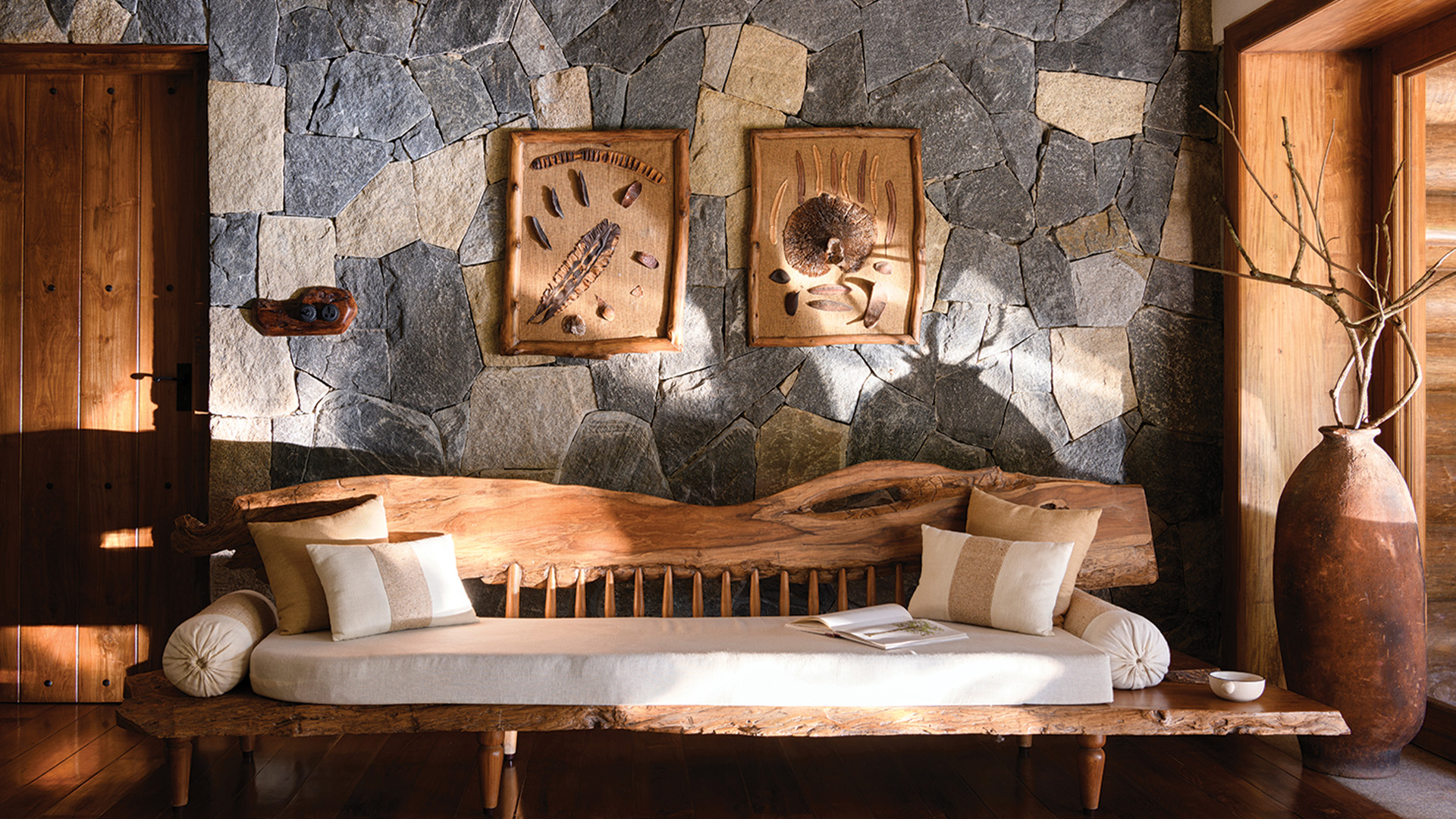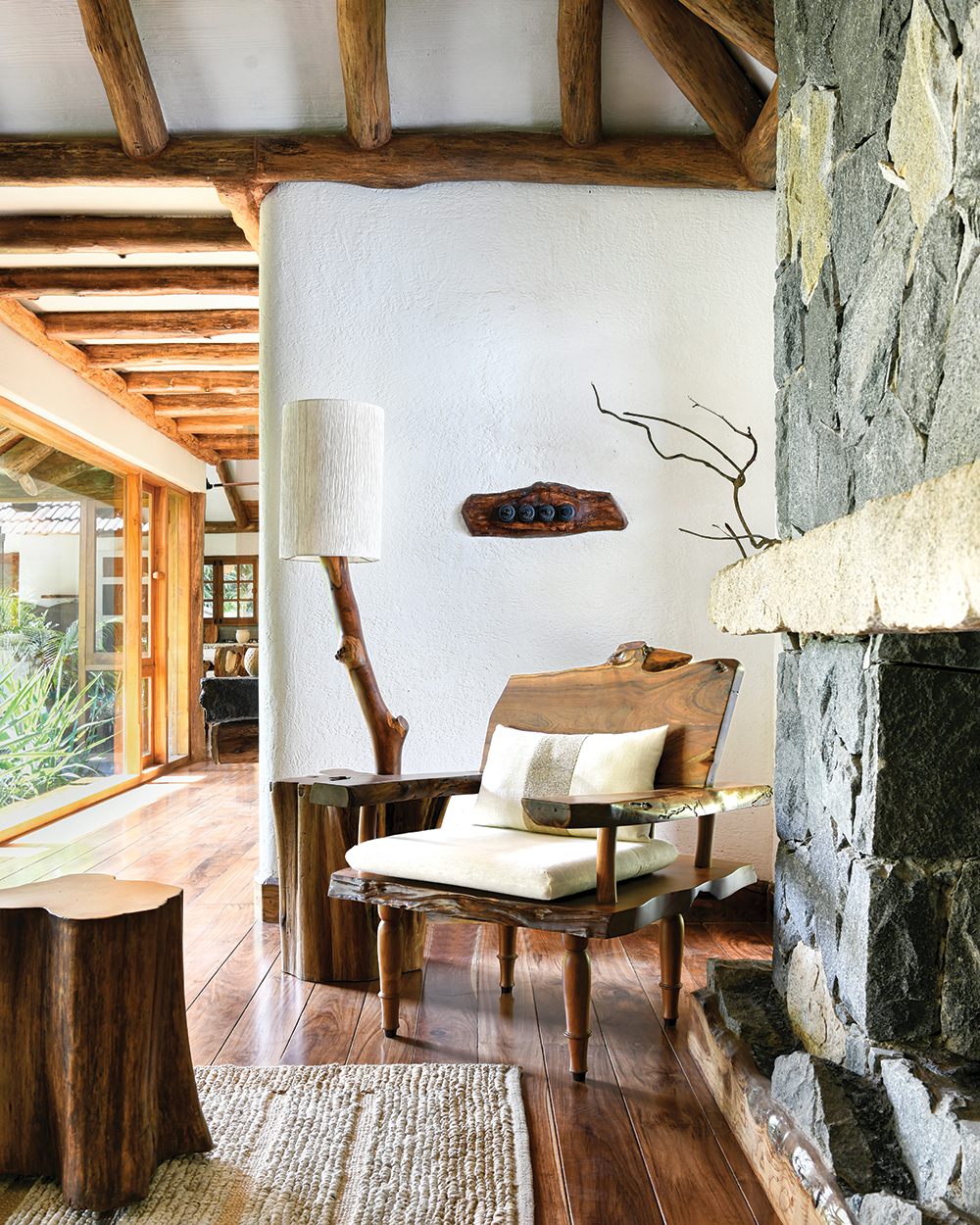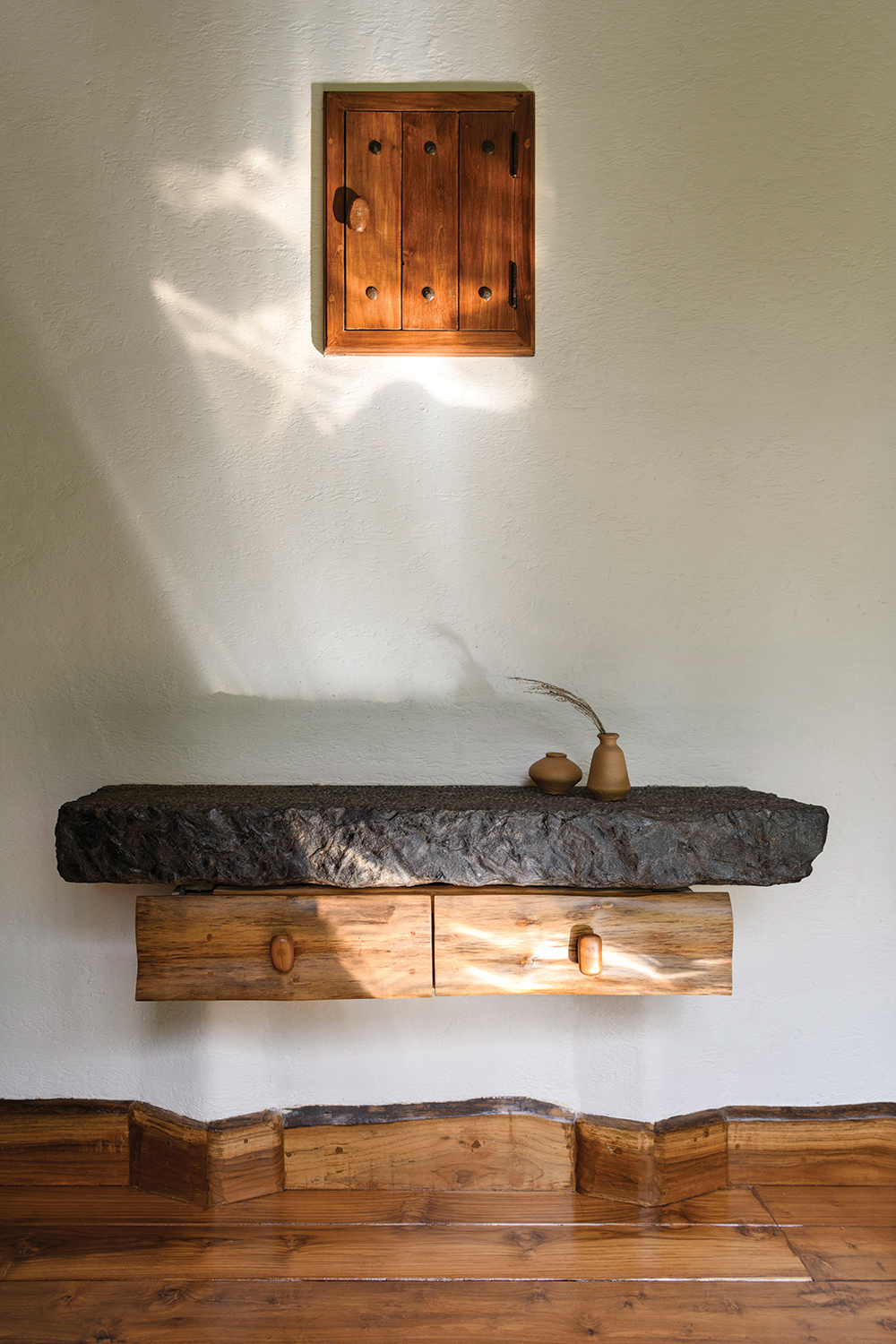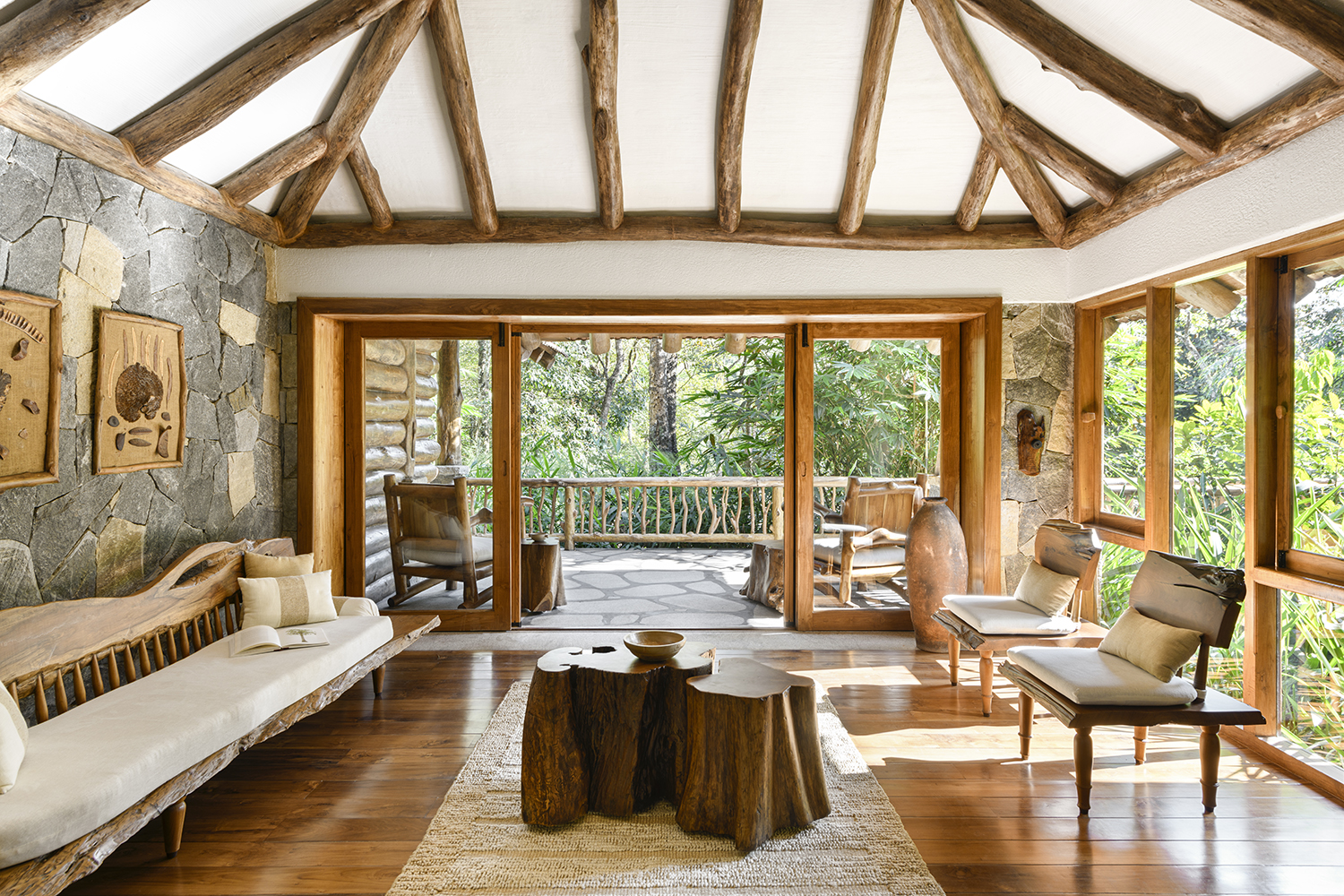Copyright © 2025 Motivate Media Group. All rights reserved.
This enchanting home in the south of India is a stunning example of ‘reverse urbanisation’
Earthitects consider the possibility of alternative luxury with their projects

Instead of focusing on material attributes, what would happen if luxury was reimagined as time spent reconnecting with the rich abundance of nature? At Estate Plavu – a home designed by Earthitects in Wayanad, Kerala, in the southwest region of India – this is exactly the given definition of luxury. The villa epitomises biophilic design and what the architects dub ‘reverse urbanisation’.

“By designing and creating dwellings that are in harmony with oneself and the natural environment, we create spaces that facilitate natural life,” explains George E. Ramapuram, principal architect and managing director of Earthitects. “Reverse urbanisation is a means of bringing nature inside, and [of] being one with it.”

Estate Plavu is one of 13 villas situated within around five hectares of lush forest lining a steep hillside. This topography provided both a challenge and an opportunity, according to Ramapuram. “We turned the challenge on its head by designing a luxury weekend home in a densely forested land full of rocks, trees and contours,” he explains.

Responding to this unique terrain required a creative approach. The architects created a design spread across three levels, incorporating two residential lodges, an infinity pool and a terrace. Each lodge sits six metres from the one above it to ensure that the estate follows the natural elevation of the hillside. The layout is configured around existing trees, and each lodge is connected by discreet bridges. The result is an estate embedded within the landscape.

Not only has the villa been constructed in harmony with the natural topography of the land, its design also pays close attention to the microclimate of the site as well as incorporating its biodiversity. Named after the large jackfruit tree that is endemic to the area, Estate Plavu attracts birds, bees and butterflies with carefully selected plants, bird baths, beehives and lily ponds.

With approximately 64 native bird species, the sound of birdsong is intrinsic to the experience of the property. “One can invite the sights and sounds of nature into the living space, celebrating the idea of ‘life in abundance’,” says Ramapuram.

Natural materials have been employed to respond to the distinct localised climate. For example, the thick stone walls absorb heat during the day and release it at night, while on the exterior deck, native stone finished with black oxide is enhanced by tropical rainfall. Estate Plavu also celebrates natural light. Courtyards bring daylight into the interior spaces, while twilight becomes a feature in the outdoor dining area which provides unrestricted views of the valley below.

The design and construction process behind Estate Plavu sought to minimise environmental impact at every level. Raw materials were either sourced onsite or locally. Fallen trees provided timber, and any wooden poles used were compensated for with replantation. Surplus materials, such as leftover teakwood, were handcrafted to make fixtures and fittings, while unpolished boulders were cut to form the rubble walls. Here, materials were minimally processed, to preserve their integrity and allow natural ageing over time.

A core aspect of Earthitect’s approach to sustainability is its belief in preserving local craftsmanship, as Ramapuram enthuses: “We believe in going vocal for local.” In this spirit, Estate Plavu incorporates a bespoke furniture collection entitled ‘Handcrafted Collectables’, which celebrates indigenous workmanship. These furniture pieces draw inspiration from the natural world. For example, the ‘Snug Seater’ is crafted using eucalyptus spindles and a rotating base, recalling the cocoon of the Bagworm moth. On the other hand, the ‘Allure Armchair’ preserves the natural edges, grain and knots of handpicked wood and is both classic and organic in its design. The sculptural pieces have been designed in harmony with the interiors, creating a natural visual rhythm throughout.

All in all, Estate Plavu is a celebration of the natural world. It is a home built within nature, rather than imposed upon it. As Ramapuram explains: “We are passionate about preserving the purity and virtue of nature. This in turn facilitates life in abundance as we are able to enjoy God’s creations in their abounding fullness of joy and strength; for mind, body and soul.”
Images are courtesy of Earthitects
The Latest
Textures That Transform
Aura Living’s AW24 collection showcases the elegance of contrast and harmony
Form Meets Function
Laufen prioritises design, functionality and sustainability in its latest collections
Preserving Culture, Inspiring Creativity
Discover the Legacy of a Saudi Art Space: Prince Faisal bin Fahd Arts Hall explores the Hall’s enduring influence on the cultural fabric of Saudi Arabia
Channelling the Dada Spirit
Free-spirited and creative, The Home Hotel in Zurich injects a sense of whimsy into a former paper factory
id Most Wanted- January 2025
Falaj Collection by Aljoud Lootah Design
Things to Covet in January
identity selects warm-toned furniture pieces and objets that align with Pantone’s colour of the year
Shaping the Future of Workspaces by MillerKnoll
Stacy Stewart, Regional Director Middle East & Africa of MillerKnoll discusses the future and evolution of design in workspaces with identity.
Shaping Urban Transformation
Gensler’s Design Forecast Report 2025 identifies the top global design trends that will impact the real estate and built environment this year
Unveiling Attainable Luxury
Kamdar Developments has launched 105 Residences, a new high-end development in Jumeirah Village Circle.
The Muse
Located in the heart of Jumeirah Garden City, formerly known as ‘New Satwa’, The Muse adds to the urban fabric of the area
Cultural Immersion Meets Refined Luxury
The Chedi Hegra opens its doors in AlUla’s UNESCO World Heritage Site
Redefining Coastal Luxury
Sunshine Bay on Al Marjan island combines seaside views, exceptional design, and world-class amenities to create a unique waterfront haven
















